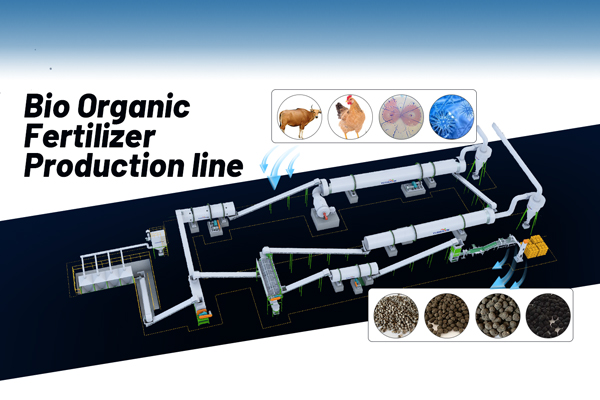Digestate, the nutrient-rich byproduct of anaerobic digestion (often from biogas plants), is gaining attention as a valuable raw material for biofertilizer production. Instead of treating digestate as waste, it can be processed into high-quality biofertilizers—beneficial for soil, crops, and the environment.
In this blog, we’ll walk you through how to turn digestate into market-ready biofertilizer, step by step.
Step 1: Understand the Types of Digestate
Digestate typically comes in two forms:
- Solid fraction – Contains fibrous organic matter, suitable for composting or granulation.
- Liquid fraction – Rich in soluble nutrients like nitrogen and potassium, often used for liquid biofertilizers or further concentration.
Before processing, it’s essential to analyze nutrient content, moisture level, and pathogen presence to determine the best treatment route.
Step 2: Dewatering the Digestate
Most digestate contains 80–95% moisture. Efficient dewatering is the first step to reduce volume and improve handling. Common equipment includes:
- Screw press separators
- Centrifuges
- Belt filter presses
After separation:
- The solid part goes to composting or granulation.
- The liquid part can be used directly as a liquid fertilizer or further concentrated.
Step 3: Composting the Solid Digestate (Optional but Recommended)
To stabilize the organic matter and reduce pathogens, the solid digestate should go through aerobic composting:
- Mix with dry bulking agents (e.g., straw, sawdust) to adjust carbon-to-nitrogen ratio.
- Maintain proper aeration and temperature (55–65°C).
- Composting usually takes 20–30 days for maturation.
The result is a safe, odorless organic material ideal for pelletizing or soil application.

Step 4: Biofertilizer Formulation and Enrichment
To improve effectiveness, the composted or dewatered digestate can be enriched with:
- Beneficial microbes (e.g., nitrogen-fixing bacteria, phosphate-solubilizing bacteria)
- Mineral additives (e.g., zeolite, humic acid)
- Plant growth-promoting substances (e.g., seaweed extract)
This transforms basic digestate into a value-added biofertilizer with both immediate and long-term benefits for crops.
Step 5: Granulation or Liquid Fertilizer Packaging
Depending on your target market and application method:
- Use a granulation line (e.g., pan granulator, roller compactor) for solid biofertilizer. YUSHUNXIN can provide you with various of bio fertilizer granulation machine, welcome to consult us!
- For the liquid portion, apply filtration and dilution before bottling as a foliar spray or fertigation product. Click here to get more!
Make sure your final product meets local quality and safety standards.

Final Tips for Success
- Always test raw digestate for heavy metals and pathogens.
- Match the fertilizer type to your end-user needs: liquid for fertigation, solid for base fertilization.
- Consider certification if you’re targeting organic farming markets.
Turning digestate into biofertilizer isn’t just sustainable—it’s smart business. Welcome to visit : https://www.biofertilizerproduction.com/faq-items/how-to-make-bio-fertilizer-from-biodigestate/